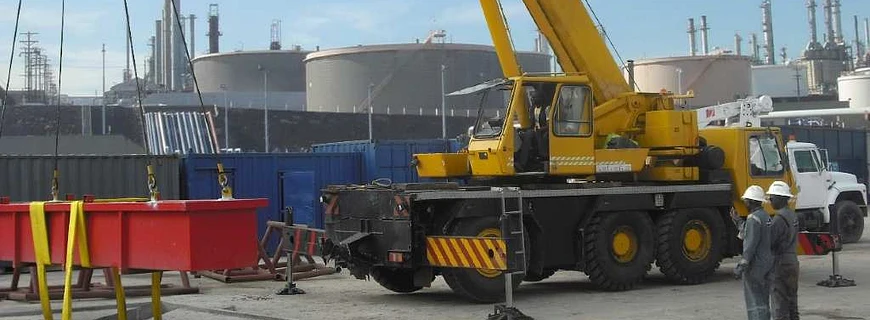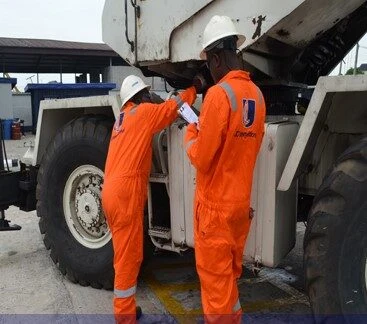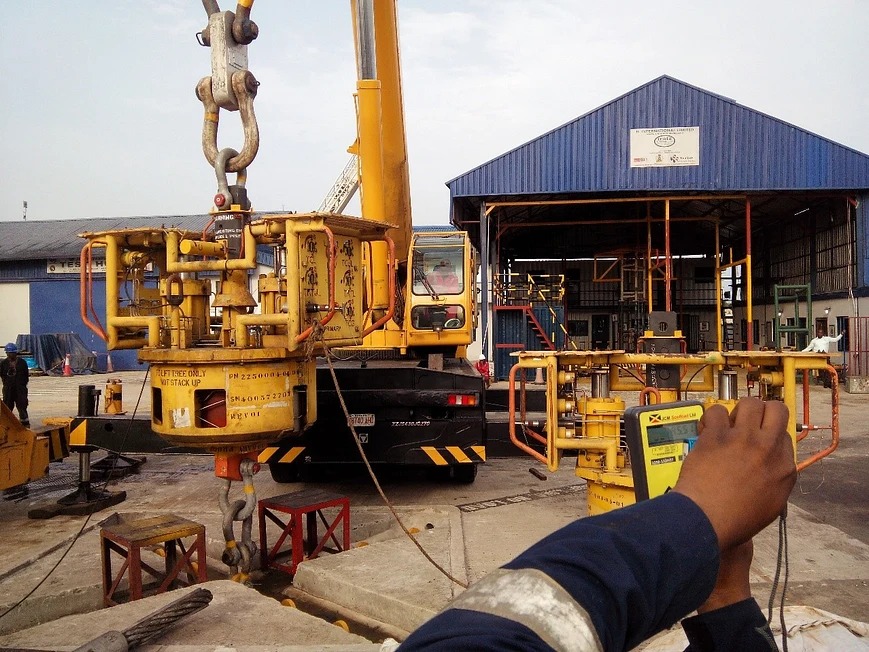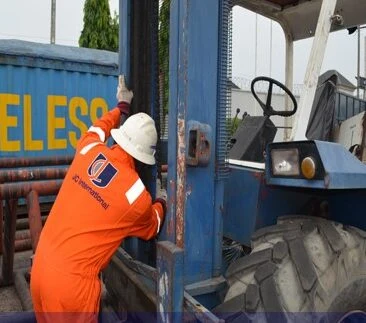FACTORS TO CONSIDER BEFORE CARRYING OUT CRANE INSPECTIONS

Factors to Consider Before Carrying Out Crane Inspections
How do you ensure safety of cranes, crane operators and assets?
This question is very popular yet unclear as to how to actualize amongst crane service hailers as well as providers. If you have recently procured a crane service for your project, you may not understand the extent as to why cranes and lifting equipment require strict adherence to safety. Ensuring safety of cranes and associated lifting equipment involves providing assurance and integrity of cranes and lifting equipment and operations through inspections.
In this article, you would be exposed to everything you need to know about your crane’s inspections, including factors to consider before carrying out crane inspections, frequency, required documentation, certified inspectors and more.
Why should I carryout crane inspection?
Cranes – dockside, tower, overhead gantry, mobile, offshore pedestal mounted, are usually big capital investments for clients and operators and are extremely important for the safe movement/transfer of loads or heavy materials or equipment. More advanced cranes with increased complexity in operations, maintenance and inspection are also being introduced in the industry. Crane inspections and crane inspection services are therefore vital to ensure the integrity, reliability, and failure-free operation of these type of equipment. They involve all relevant tasks for the inspection including testing where applicable.

How often do I carryout Crane Inspection?
The occupational safety and health administration (OSHA) reinstates that active and working cranes should be inspected at least once in a year depending on the crane usage frequency which would attract additional inspections
What are the perceived challenges?
“Failure to understand the scope, methods, and standards of crane inspection, and acceptance/rejection criteria specified for all types of cranes and associated lifting equipment/accessories.” would lead to equipment failure, downtime, unavailability, wasted man-hours, conflicts, and inflated costs required to return the equipment back to service. Especially relevant is that failure can also present high risks to clients ‘operations and introduce health and safety risks to personnel and the environment. The scope, methods, and standards of crane inspection shall consider several factors to guide a proper and successful crane inspection operation.
The factors to consider before carrying out crane inspection includes;
i. Legal requirements
- Lifting Operation Lifting Equipment Regulation LOLER 1998 (Regulation 9) requires lifting equipment to be thoroughly examined before being taken into use for the first time, at intervals throughout its life and after exceptional circumstances.
- Provision and Use of Work Equipment Regulation PUWER Regulation 6 requires duty holders to ensure that work equipment exposed to conditions causing deterioration is inspected at suitable intervals and each time an exceptional circumstance which is liable to jeopardise the safety of the equipment has occurred.
- Other National Guidelines and Procedure for Lifting Equipment and Lifting Operations
ii. Operating Conditions
- Environment of operation – offshore, onshore, swamp etc.
- Frequency of operations – heavy and low utilisation
iii. Age of the equipment
The age of the equipment is an important factor to consider during crane inspections. The confederation of international contractors (CICA) recommends consistent, stringent independent inspection procedures and verification of past maintenance history for cranes less than 10 years of age; cranes between 10 and 20 years old; and, cranes in excess of 20 years old.
iv. Degree of risk
Cranes pose high risks and related hazards. This should be considered when carrying out crane inspection. The risks depend on previous crane usage histories, location, frequency of use and external factors. These risks range from mechanical damage, slipping, exceeding lifting limits, wear and tear to even the very basic operator competency.

v. Competence of Examiners and Inspectors
- Regulatory requirement for crane inspections to be undertaken by a Competent Person who has the practical knowledge and experience of the crane and associated lifting accessories to be able to detect defects and assess their importance in relation to the safety and continued use of the equipment.
vi. Results of previous inspections
Provides historical information about the equipment and the defects list where the Competent Person has given a time limit for rectification or remediation works. Furthermore, it provides an opportunity to check that the client (duty holder) has a system in place to track and monitor the defects to ensure that are completed before the agreed date or that the equipment is removed from service.
vii. Identification and tests of Critical Components
Any component of the crane assembly devoid of redundancy and/or auxiliary restraining devices whose failure would result in an uncontrolled descent of the load or uncontrolled rotation of the structure. This could also result in serious injury to operator and/or anyone in proximity of the lifting equipment.
viii. Manufacturer’s recommendations
Manufacturers and makers of crane provide recommendations and guides for crane users before and during utilization of the cranes. They set out to identify and recommend a baseline specification for cranes in relation to safety. These recommendations is a factor that should be considered before carrying out crane inspections as it guides safety metrics definition and proof of usability.
ix. Standards and Codes
There are several standards and codes developed to guide different crane usage and safety thresholds. These codes ensure that best practices for crane selection, inspection, and usage in relation to the type of project being adopted for is met. A popular standard is the safety factor for cranes which is 5 to 1, this capacity, certified by the manufacturer or a qualified crane service provider/operator, shall be based on the manufacturer’s specifications with a 5 to 1 safety factor for all components. These standards and Codes guide the practice for safe use, inspection and maintenance of cranes.

These factors represent the minimum requirement for inspections and shall be considered to ensure safe operation of cranes.
Due to the challenges of crane inspection and most of all, the result of not keeping to the inspection requirements, it is extremely vital that attention is given to the selection of a Competent Person/Authority and that the qualification, experience and track record of the provider is considered. It is also important to create checklists and trackers that would aid in fulfilling the OSHA crane inspection requirements.
At JC International, crane inspections are performed by experienced and qualified crane inspectors with sufficient skill and knowledge in the field of cranes and familiar also with relevant codes, standards, and regulations.
Our focus is to provide a world-class service to ensure that our clients as duty holders, can use their cranes safely and cost-effectively whilst also demonstrating compliance with national and international regulations.
Kindly call 0805 659 9659 for more details

Cranes for Sale
This article on “Factors to Consider Before Carrying Out Crane Inspections” is a valuable resource for anyone involved in crane operations and maintenance. Crane inspections are critical to ensuring workplace safety and preventing potential accidents, making the insights shared here highly beneficial. Your contribution is valuable.